A riff is a short, repeated motif or figure in the melody or accompaniment of a musical composition. Riffs are most often found in rock music, heavy metal music, Latin, funk, and jazz, although classical music is also sometimes based on a riff, such as Ravel's Boléro. Riffs can be as simple as a tenor saxophone honking a simple, catchy rhythmic figure, or as complex as the riff-based variations in the head arrangements played by the Count Basie Orchestra.

"In the Mood" is a popular big band-era jazz standard recorded by American bandleader Glenn Miller. "In the Mood" is based on the composition "Tar Paper Stomp" by Wingy Manone. The first recording under the name "In the Mood" was released by Edgar Hayes & His Orchestra in 1938.

Irving Milfred Mole known professionally as Miff Mole, was an American jazz trombonist and band leader. He is generally considered one of the greatest jazz trombonists and credited with creating "the first distinctive and influential solo jazz trombone style."

Glenn Miller and His Orchestra was an American swing dance band that was formed by Glenn Miller in 1938. Arranged around a clarinet and tenor saxophone playing melody, and three other saxophones playing harmony, the band became the most popular and commercially successful dance orchestra of the swing era and one of the greatest singles charting acts of the 20th century. As of 2024, Ray Anthony is the last surviving member of the orchestra.

Joseph Matthews "Wingy" Manone was an American jazz trumpeter, composer, singer, and bandleader. His recordings included "Tar Paper Stomp", "Nickel in the Slot", "Downright Disgusted Blues", "There'll Come a Time ", and "Tailgate Ramble".
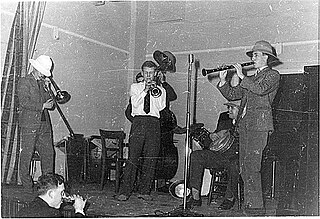
Trad jazz, short for "traditional jazz", is a form of jazz in the United States and Britain that flourished from the 1930s to 1960s, based on the earlier New Orleans Dixieland jazz style. Prominent trad jazz musicians such as Chris Barber, Freddy Randall, Acker Bilk, Kenny Ball, Ken Colyer and Monty Sunshine performed a populist repertoire which also included jazz versions of pop songs and nursery rhymes.
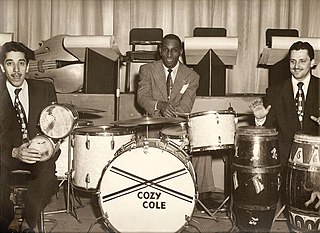
William Randolph "Cozy" Cole was an American jazz drummer who worked with Cab Calloway and Louis Armstrong among others and led his own groups.
Joseph Hilton "Nappy" Lamare was an American jazz banjoist, guitarist, and vocalist.
Boyce Brown was an American jazz dixieland alto saxophonist born in Chicago, Illinois.
Carmen Mastren was an American jazz guitarist, banjoist, and violinist who was a member of the Tommy Dorsey orchestra from 1936 to 1941.

Nick Fatool was an American jazz drummer.
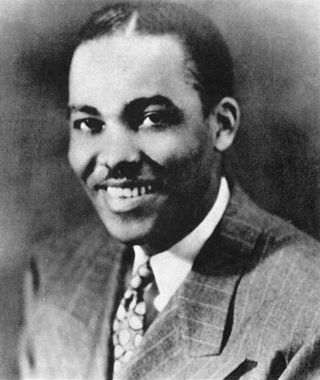
Joseph Copeland Garland was an American jazz saxophonist, composer, and arranger, best known for writing "In the Mood".
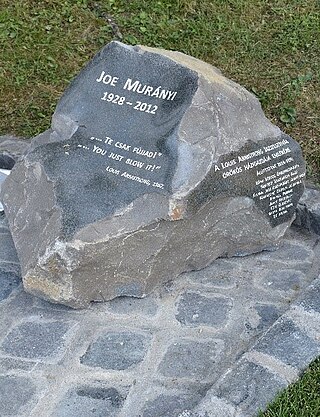
Joseph P. Muranyi was an American jazz clarinetist, producer and critic.

Arne "Papa" Bue Jensen, known as Papa Bue, was a Danish trombonist and bandleader, chiefly associated with the Dixieland jazz revival style of which he was considered an important proponent. He founded and led the Papa Bues Viking Jazzband, which was active from 1956.

"Farewell Blues" is a 1922 jazz standard written by Paul Mares, Leon Roppolo and Elmer Schoebel.

"Sensation Rag" or "Sensation" is a 1918 jazz instrumental by the Original Dixieland Jazz Band. It is one of the earliest jazz recordings. It is not related to Joseph Lamb's 1908 "Sensation Rag", which is a ragtime piano piece.
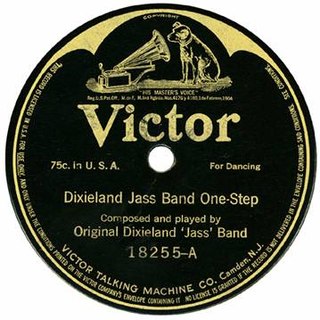
"Dixieland Jazz Band One-Step" also known as "Dixie Jass Band One-Step" and "Original Dixieland One-Step" is a 1917 jazz composition by the Original Dixieland Jass Band released as an instrumental on a 78rpm record, issued by the Victor Talking Machine Company. The song is a jazz milestone as the first commercially released "jass" or jazz song.
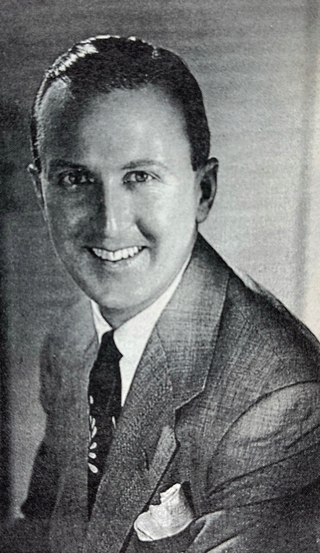
Charles LaVere Johnson, better known as Charlie LaVere was an American jazz pianist, vocalist, bandleader, and composer. He is best known for his extensive work with arranger Gordon Jenkins, including the 1948 million seller “Maybe You’ll Be There”, his own dixie jazz group LaVere's Chicago Loopers, and his later work for Disneyland's Golden Horseshoe Revue, for which he composed the music and led the band performances from 1955 to 1959, and which would go on to become the longest running stage show in the history of show business, running for over 31 years and over 39,000 performances.
Fidgety Feet is a Dixieland jazz standard, first recorded by the Original Dixieland Jass Band in June 1918. The more acclaimed version is the 1924 recording by The Wolverines, with Bix Beiderbecke. It is not to be confused with the George Gershwin song of the same name that appears in the 1926 musical Oh, Kay!.















